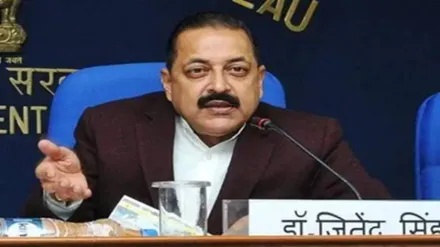
Government Assures No Immediate Policy Shifts on Retirement Age
Recent parliamentary inquiries regarding potential adjustments to the retirement age for central government employees have been addressed by Union Minister Jitendra Singh, who confirmed that no such plans exist at present. The minister emphasized that the current retirement age of 60 years for central government employees will remain unchanged in the foreseeable future. This clarification comes amid growing speculation about policy reforms, particularly as discussions surrounding workforce restructuring and pension reforms intensify. While the government has not ruled out future changes, it has reiterated that no formal proposals have been submitted to the Joint Consultation Mechanism, the body responsible for mediating between employees and authorities. The stability of the current policy provides clarity to thousands of government workers, though debates about its long-term viability continue to persist in political and labor circles.
State vs. Central Retirement Policies: A Jurisdictional Divide
The disparity in retirement ages between central and state government employees has sparked questions about administrative coordination. Union Minister Singh clarified that the central government does not maintain data on state-level retirement policies, as these fall under the purview of individual state governments. This lack of centralized oversight has led to inconsistencies in retirement frameworks across the country, with some states adopting varying age limits. While the central government’s stance remains firm on its 60-year policy, state governments have historically implemented their own rules, often influenced by local economic conditions and demographic trends. Critics argue that this fragmented approach creates administrative complexities, while supporters contend that state-specific policies better address regional workforce needs.
Vacancy Management and Data Transparency Concerns
Parliamentarians also raised concerns about the management of vacant posts created by retirements. The government responded by stating that no formal policy exists to eliminate these vacancies, leaving the issue to be addressed by individual departments. This lack of centralized data on post eliminations has drawn scrutiny, as officials acknowledge that tracking such vacancies is essential for effective workforce planning. While the government admits no official records exist on the number of posts abolished since 2014, some experts suggest that this opacity could hinder strategic resource allocation. The absence of clear guidelines raises questions about how departments balance retention of experienced staff with the need for cost-effective staffing solutions.
Employee Union Stances and Policy Proposals
Employee unions have long debated the merits of adjusting the retirement age, with some advocating for higher limits to retain experienced personnel and others pushing for lower ages to reduce financial burdens on the pension system. However, the government has maintained that no formal proposals have been submitted by the National Council to initiate such changes. This stance has drawn mixed reactions, with some unions expressing frustration over the lack of dialogue and others appreciating the stability of the current framework. As the debate continues, the government’s position remains that any policy shift would require comprehensive consultation with stakeholders, ensuring that reforms align with both fiscal and operational priorities.
Current Framework and Future Outlook
The central government’s current retirement framework, set at 60 years for employees, has become a focal point of discussions amid evolving workforce dynamics. While the government has no immediate plans to alter this policy, the broader context of pension reforms and demographic shifts suggests that future adjustments could be on the horizon. The absence of centralized data on state-level policies and vacancy management highlights areas requiring reform, yet the government’s emphasis on stability underscores its commitment to maintaining the status quo. As debates continue, the balance between fiscal responsibility and workforce sustainability will remain critical in shaping the trajectory of retirement policies for years to come.




